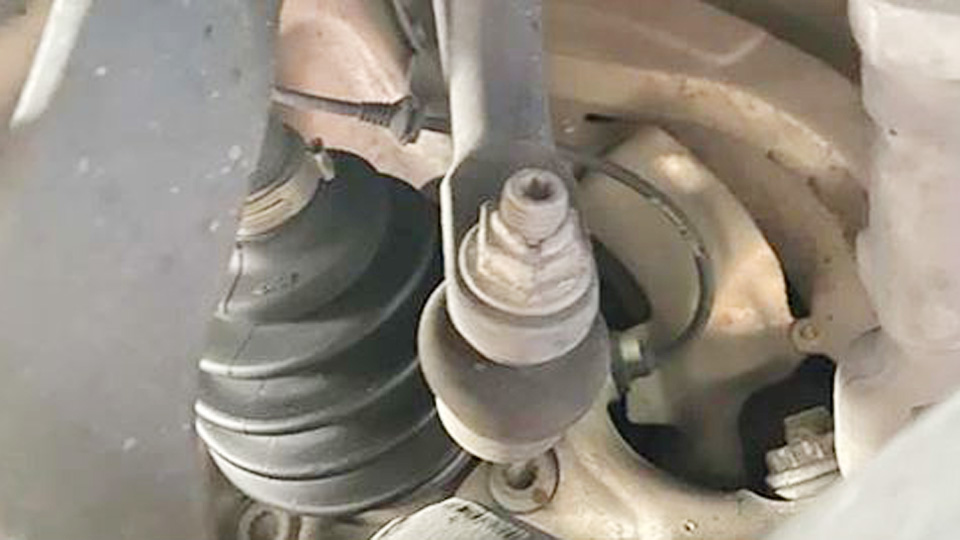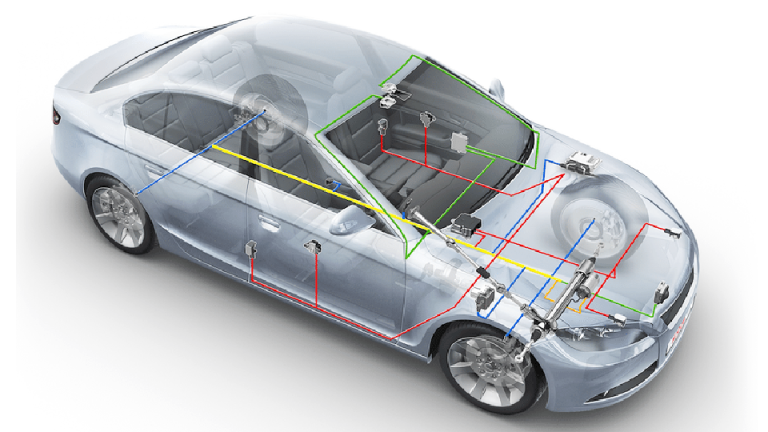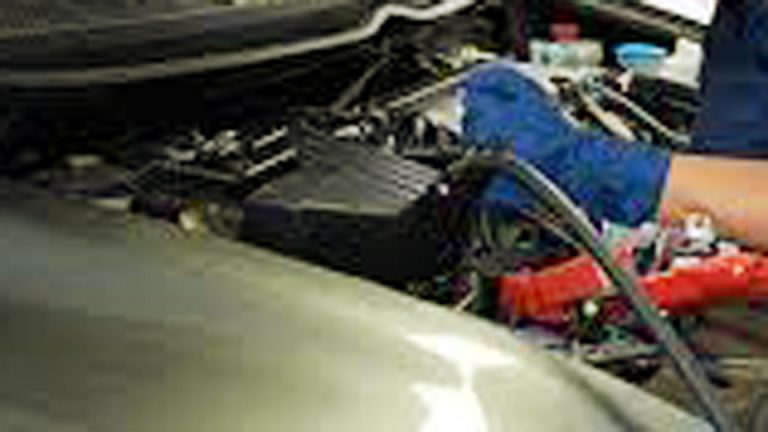I’m out in my garage, wrench in hand, and I can still hear that awful grinding noise my old sedan made last week when I turned into the driveway. If you’re wondering, “Why does my car make loud noise when I turn?” you’re not alone. It’s one of those heart-sinking moments every driver dreads—whether you’re a DIY mechanic, a car enthusiast, or just someone trying to get to work without a headache.
That noise could be a minor annoyance or a sign of something serious, and I’m here to walk you through what’s going on under the hood, based on years of tinkering with cars and helping friends fix theirs.
In this guide, we’ll dig into the most common culprits behind those loud noises when turning, from squealing belts to grinding wheel bearings. I’ll break down what each sound means, how to diagnose it, and what you can do about it—whether you’re grabbing your toolbox or calling a mechanic. Let’s get started with practical advice tailored for US drivers, whether you’re battling icy Midwest roads or cruising sunbaked highways in the South.

Photo by beckerservicecenter
Common Causes of Loud Noises When Turning
When your car groans, squeals, or grinds during a turn, it’s trying to tell you something. The steering system, suspension, or even the tires could be the source. Here’s a rundown of the usual suspects, based on my own experience wrenching on everything from pickup trucks to compact sedans.
Power Steering Problems
Your power steering system is often the first place to look when you hear a loud noise while turning. This system helps you steer with ease, but when it’s struggling, it can scream for attention.
Low Power Steering Fluid
I’ve seen this more times than I can count: a car starts whining like a tired puppy when you crank the wheel. Low power steering fluid is often the culprit. The fluid lubricates and pressurizes the system, and when levels drop due to a leak or neglect, the pump works harder, creating a high-pitched whine or squeal.
How to Check It: Pop the hood and find the power steering reservoir—usually a small plastic container near the engine with a cap labeled “PS” or a steering wheel icon. Check the fluid level against the “min” and “max” marks. If it’s low, top it off with the manufacturer-recommended fluid (check your owner’s manual). For my old Ford, I used ATF, but some cars need specific power steering fluid.
Fixing It: Add fluid if it’s low, but don’t stop there. Look for leaks under the car—puddles or damp spots near the front are a dead giveaway. A leaky hose or seal means you’ll need to replace the part or visit a mechanic. I once ignored a small leak, and my pump burned out, costing me $300 more than a $20 hose would’ve.
Warning: Driving with low fluid can damage the pump permanently. Check it ASAP.
Worn Power Steering Pump
If the fluid’s fine but the noise persists, the pump itself might be failing. A worn-out pump struggles to maintain pressure, especially during sharp turns, leading to a grinding or whining sound.
Diagnosing It: Turn the wheel while the car’s idling. If the noise gets louder as you turn, the pump’s likely the issue. I had this happen on a Chevy Malibu—every turn sounded like a banshee. Revving the engine slightly can make the noise more pronounced.
Fixing It: Replacing a power steering pump isn’t a beginner job, but if you’re handy, you can do it with a socket set and a few hours. Expect to pay $150–$400 for parts and labor if you go to a shop. Always flush the system and use fresh fluid after a pump replacement to avoid debris damage.
Faulty Power Steering Belt
The serpentine belt (or drive belt) powers the pump, and if it’s loose, worn, or misaligned, you’ll hear a squeal during turns. I once helped a buddy tighten the belt on his Dodge Ram, and the noise vanished instantly.
How to Check It: Inspect the belt for cracks, fraying, or glazing (a shiny, worn look). Press it with your thumb—it should have about half an inch of give. Too loose? Tighten it. Too worn? Replace it. A new belt costs $20–$50, and it’s a 30-minute job with basic tools.
Wheel Bearing Issues
Wheel bearings keep your wheels spinning smoothly, but when they wear out, they can make a loud grinding or roaring noise, especially when turning. I’ve dealt with this on my old Jeep after off-roading one too many times.
Signs of a Bad Wheel Bearing
The noise from a bad wheel bearing often changes pitch when you turn left or right. Turning left puts more weight on the right wheel, stressing the bearing, and vice versa. On my Jeep, turning right made a deep growl that sounded like I was dragging a toolbox.
Diagnosing It: Jack up the car and wiggle the wheel side to side. Any play or looseness points to a bad bearing. You might also hear a humming noise at higher speeds, even when driving straight.
Fixing It: Replacing a wheel bearing is a job for intermediate DIYers. You’ll need a jack, stands, and a bearing puller. Parts cost $50–$150 per wheel, but labor at a shop can hit $200–$400 per side. Don’t delay—bad bearings can cause wheel wobble or even detachment.
Warning: A failing bearing is a safety hazard. If you hear grinding, get it checked pronto.
CV Joint or Axle Problems
For front-wheel-drive cars, constant velocity (CV) joints are critical for transferring power to the wheels while allowing them to turn. A damaged CV joint often makes a clicking or popping noise when turning, especially during tight turns like parking.
How CV Joints Fail
CV joints are protected by rubber boots filled with grease. If the boot tears (common on older cars or after hitting potholes), dirt gets in, and the joint wears out fast. I learned this the hard way on my Honda Civic after ignoring a torn boot for months.
Diagnosing It: Look under the car near the front wheels for torn or greasy CV boots. A clicking noise when turning is a telltale sign. Test it by driving in a tight circle in a parking lot—left and right turns will reveal which side’s bad.
Fixing It: A new CV axle (joint included) costs $60–$150, and replacing it is a solid weekend project for DIYers. Shops charge $200–$500 per axle. If the boot’s just torn and the joint’s still good, a boot replacement kit ($20–$40) can save you money.
Suspension Component Wear
Your car’s suspension—think struts, control arms, and bushings—takes a beating on US roads, from pothole-riddled cities to gravel backroads. Worn suspension parts can cause clunking or squeaking when turning.
Worn Control Arm Bushings
Control arm bushings cushion the suspension, but they wear out over time, especially in harsh climates like the Northeast. A bad bushing can cause a clunk or squeak when you turn, as the control arm shifts abnormally.
Diagnosing It: Jack up the car and inspect the bushings (rubber components connecting the control arm to the frame). Cracks, tears, or missing chunks mean they’re shot. I once replaced bushings on a Toyota Camry, and the steering felt like new.
Fixing It: New bushings cost $20–$80 per side, but pressing them in requires a press or a shop’s help. Total cost with labor: $100–$300 per side.
Bad Struts or Shocks
Struts and shocks absorb road bumps, but worn ones can squeak or clunk during turns, especially on uneven roads. My F-150 sounded like a creaky door until I swapped out the front struts.
Diagnosing It: Push down hard on each corner of the car. If it bounces more than once, the strut or shock is worn. Look for oil leaks on the strut body, too.
Fixing It: Struts cost $100–$300 each, and you’ll need an alignment after replacement. DIY is possible with a spring compressor, but shops charge $300–$600 per pair.
Tire-Related Noises
Sometimes, the noise isn’t mechanical—it’s your tires. Worn or improperly inflated tires can squeal or hum when turning, especially on hot asphalt or sharp corners.
Uneven Tire Wear
Tires with uneven tread (from poor alignment or suspension issues) can make a humming or squealing noise. I noticed this on my wife’s SUV after skipping a tire rotation for too long.
Diagnosing It: Check tread depth with a penny—Lincoln’s head should be partly covered. Uneven wear across the tire suggests alignment issues. Also, ensure tires are inflated to the PSI listed on the driver’s door jamb.
Fixing It: Rotate tires every 6,000–8,000 miles and get an alignment ($50–$100). New tires cost $100–$200 each, depending on the brand and size.
Tire Type and Road Conditions
Performance tires or low-profile tires (common on sports cars) can squeal during turns, especially in hot weather or on slick roads. My Mustang’s summer tires screamed on tight corners until I switched to all-seasons for daily driving.
Fixing It: If the noise is tire-related, consider switching to all-season tires for quieter performance ($100–$250 each). Check road conditions, too—wet or gravelly roads amplify tire noise.
Step-by-Step Guide to Diagnosing the Noise
Let’s get hands-on. Here’s how I’d tackle diagnosing a loud noise when turning, based on years of trial and error in my garage.
- Listen to the Noise: Is it a whine, squeal, grind, click, or clunk? Whining points to power steering, grinding to wheel bearings, clicking to CV joints, and clunking to suspension.
- Check Power Steering Fluid: Pop the hood, locate the reservoir, and top off if low. Look for leaks.
- Inspect the Belt: Check for wear or looseness. Tighten or replace as needed.
- Test Drive: Drive in a quiet area and make sharp left and right turns. Note when the noise is loudest.
- Jack Up the Car: Check wheel play for bearings and inspect CV boots and suspension components.
- Check Tires: Look for uneven wear or incorrect pressure.
- Get a Second Opinion: If you’re unsure, have a trusted mechanic confirm your findings.
Pro Tip: Record the noise with your phone during a test drive. It’s easier to pinpoint the issue when you can replay it.
Comparison Chart: Common Causes and Fixes
Here’s a quick reference to help you decide what’s wrong and how to fix it.
| Issue | Noise Type | DIY Difficulty | Cost to Fix (DIY) | Cost to Fix (Shop) |
|---|---|---|---|---|
| Low Power Steering Fluid | Whine/Squeal | Easy | $10–$30 (fluid) | $50–$150 (leak repair) |
| Worn Power Steering Pump | Whine/Grind | Moderate | $50–$150 (pump) | $150–$400 |
| Faulty Belt | Squeal | Easy | $20–$50 (belt) | $80–$150 |
| Bad Wheel Bearing | Grind/Roar | Hard | $50–$150 (bearing) | $200–$400 |
| CV Joint/Axle | Click/Pop | Moderate | $60–$150 (axle) | $200–$500 |
| Worn Bushings | Clunk/Squeak | Hard | $20–$80 (bushings) | $100–$300 |
| Bad Struts | Clunk/Squeak | Moderate | $100–$300 (strut) | $300–$600 |
| Tire Issues | Squeal/Hum | Easy | $50–$100 (alignment) | $100–$200 (tires) |
Tips for US Drivers
Driving conditions in the US vary wildly—think snowy Michigan winters, scorching Arizona summers, or pothole-filled urban streets. Here’s how to keep your car quiet and safe:
Cold Climates: Freezing temps thicken power steering fluid, amplifying whines. Use synthetic fluid for better performance.
Hot Climates: Heat wears out belts and tires faster. Check them monthly in summer.
Urban Driving: Potholes and tight turns stress CV joints and suspension. Inspect regularly if you’re in a city like Chicago or NYC.
Highway Cruising: Long drives can mask bearing noises until they’re severe. Listen for hums at 50+ mph.
Conclusion
A loud noise when turning your car isn’t just annoying—it’s a cry for help. Whether it’s a simple fix like topping off power steering fluid or a bigger job like replacing a wheel bearing, catching the issue early saves you time, money, and stress. I’ve been there, cursing in my garage as a $20 fix turned into a $400 repair because I waited too long. Take an hour this weekend to pop the hood, check your fluid, and listen closely during a test drive. You’ve got this—and your car will thank you with a quieter ride.
Keep a small notebook in your glovebox to track maintenance like fluid checks and tire rotations. It’s a lifesaver when diagnosing problems later.
FAQ
Why does my car only make noise when turning left?
A noise only when turning left usually points to a bad right wheel bearing or CV joint, as left turns put more stress on the right side. Jack up the right wheel and check for play or inspect the CV boot for tears.
Can I drive with a noisy power steering pump?
You can, but it’s risky. A whining pump might be low on fluid or failing, which can lead to complete steering failure. Top off the fluid and check for leaks immediately.
How do I know if it’s my tires or something else?
Tire noise is usually a squeal or hum that changes with road surface. Check tire pressure and tread wear. If the noise persists after fixing those, inspect the wheel bearings or suspension.
Is it expensive to fix a CV joint?
A new CV axle costs $60–$150 for DIYers, but shops charge $200–$500 with labor. Replacing just the boot ($20–$40) is cheaper if caught early.
Should I replace both wheel bearings at once?
If one bearing is bad, the other might not be far behind, especially on older cars. Replacing both saves labor costs long-term, but it’s not always necessary if the second one tests fine.


